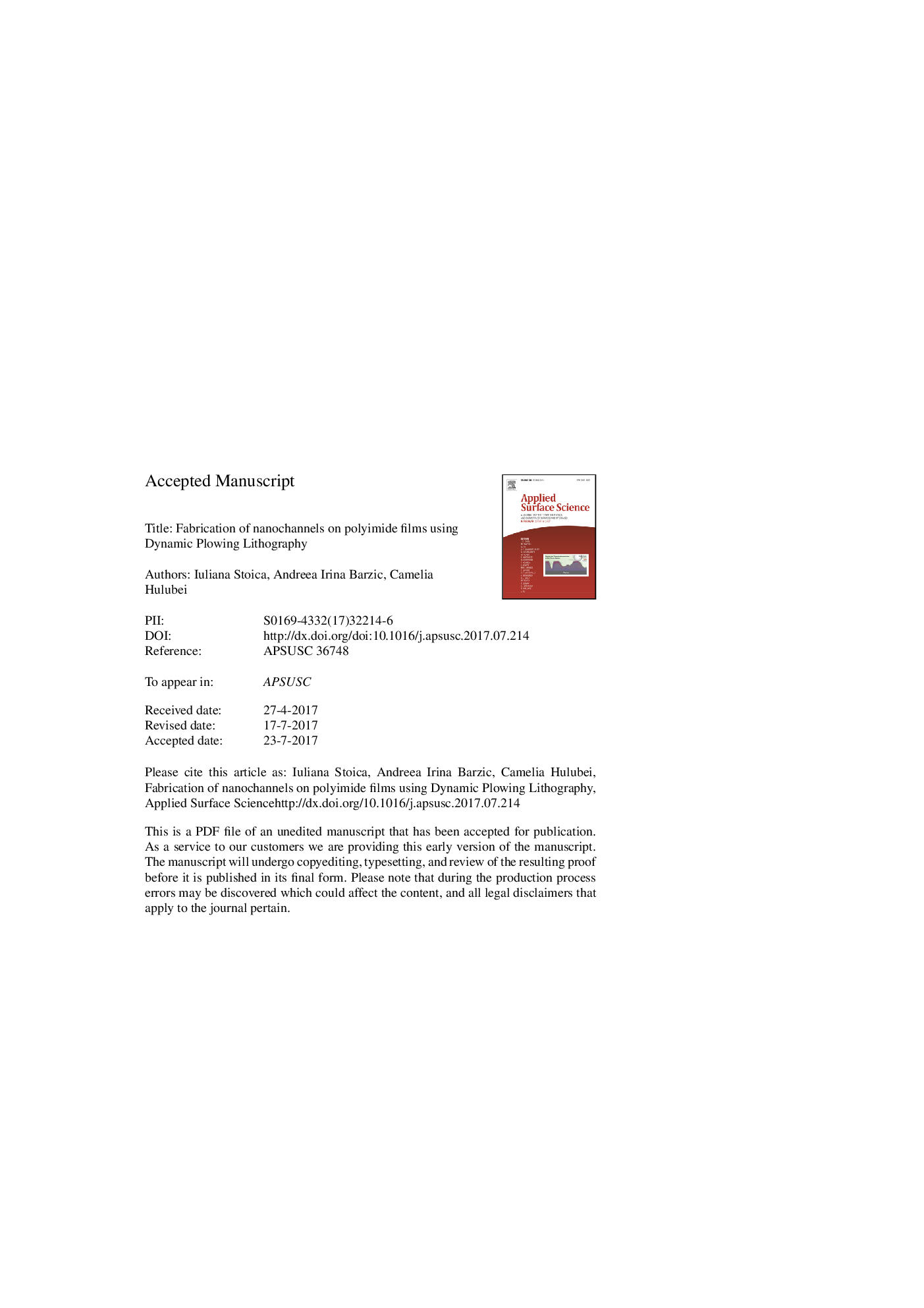| Article ID | Journal | Published Year | Pages | File Type |
|---|---|---|---|---|
| 5349521 | Applied Surface Science | 2017 | 25 Pages |
Abstract
Three distinct polyimide films were analyzed from the point of view of their morphology in order to determine if their surface features can be adapted for applications where surface anisotropy is mandatory. Channels of nanometric dimensions were created on surface of the specimens by using a less common atomic force microscopy (AFM) method, namely Dynamic Plowing Lithography (DPL). The changes generated by DPL procedure were monitored through the surface texture and other functional parameters, denoting the surface orientation degree and also bearing and fluid retention properties. The results revealed that in the same nanolithography conditions, the diamine and dianhydride moieties have affected the characteristics of the nanochannels. This was explained based on the aliphatic/aromatic nature of the monomers and the backbone flexibility. The reported data are of great importance in designing custom nanostructures with enhanced anisotropy on surface of polyimide films for liquid crystal orientation or guided cell growth purposes. At the end, to track the effect of the nanolithography process on the tip sharpness, degradation and contamination, the blind tip reconstruction was performed on AFM probe, before and after lithography experiments, using TGT1 test grating AFM image.
Related Topics
Physical Sciences and Engineering
Chemistry
Physical and Theoretical Chemistry
Authors
Iuliana Stoica, Andreea Irina Barzic, Camelia Hulubei,
